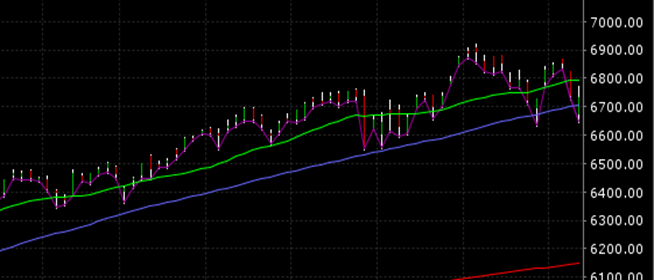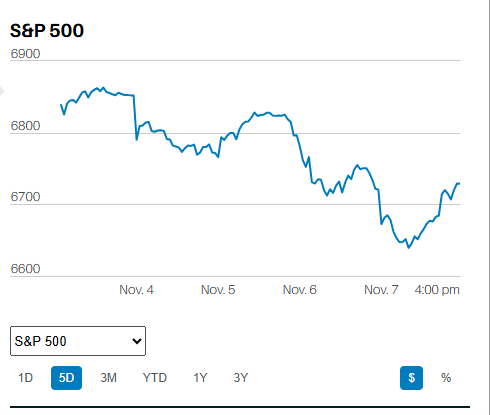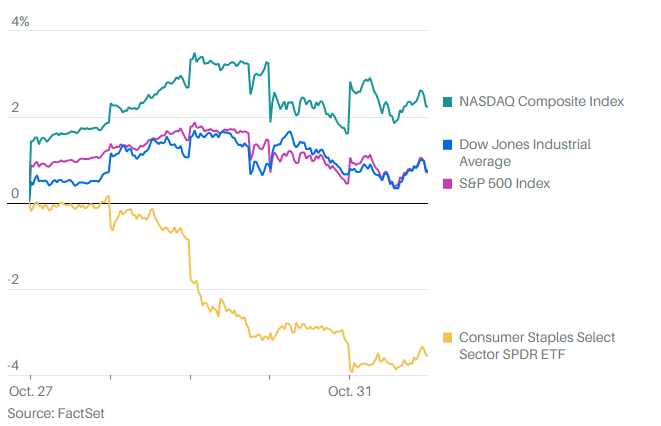Understanding your cash needs

Market Update
The S&P 500 lost 2.1% to close the week at 4392.59. The Nasdaq fell 2.6%. We wrote last week that the S&P 500 might make a quick trip to the bottom of its trading range after its failure to breakout. Failing to break above a trading range often leads to a test of support. Traders start locking in profits and short-sellers jump on board. It looks as if that is happening now. It appears that the test of support may come in the next week or two. The index has been in a trading range between 4637.30 and 4114.65 since late January. We expect support to hold around 4200 but the ride down can be nerve-wracking.
The May through September period may be rough for the S&P as well. The index has been down after the first four months of the year 15 times since 1980. Six of those times the index has lost further ground from May through September, according to Barron’s. The average return from May through September in those 15 years is minus 1.5%. Of course, it is a small sample size, which limits the statistical significance. But it does speak to tendencies. The market tends to trend. Momentum exists. A market trending down tends to continue to trend down. It can take a significant change in earnings or interest rate expectations to change the trend. There is unusual uncertainty about interest rates in 2022. Investors are anxious given the rise in rates so far this year. Expect above-average volatility as a result.
The 10-year Treasury rose to 2.83% last week. The two-year Treasury is at 2.53%. The two-year is most influenced by the Federal Funds rate. The 30-year Treasury is threatening to break above 3%. It is currently at 2.93%. Bonds remain mired in a bear market. The Vanguard Short-term Treasury ETF is down 2.67% on the year. The Vanguard Intermediate-term Treasury ETF is down 7.01%. The Vanguard long-term Treasury ETF is down 17.36%. The worst might be over for bonds but there is no sign of a turnaround yet. The charts show bonds in free fall. The risk of a more substantial pullback in the stock market rises as bond prices plunge and yields spike.
Economic Indicators
The NY Fed median 1-year expected inflation is 6.6% for March up from 6.0% the month prior. Inflation expectations are important as they can drive actual inflation. The NY Fed median 3-year expected inflation is 3.7% for March down from 3.8% the prior month. Inflation has averaged approximately 3.5% post-WWII. The year-over-year CPI was 8.5% in March up from 7.9% in February. Core CPI was 6.5% in March up from 6.4% the prior month. The National Federation of Independent Businesses survey showed that a third of small-business owners now call inflation their biggest problem, according to Barron’s. Seventy-two percent of owners raised selling prices last month. It is the highest reading in the survey’s 48-year history. The inflation numbers and business reaction to them all but guarantee aggressive Fed action on the interest rate front for the rest of 2022.
Retail sales rose 0.5% down from a 0.8% increase the prior month. Retail sales dropped 0.3% excluding gasoline sales, according to Stephanie Pomboy of MacroMavens. Real retail sales fell 0.7% in March down from 0.0% the prior month. It will be difficult for the economy to grow if consumer spending doesn’t pick up. A strong labor market should mean that it will.
The economic data suggests inflation is an ongoing problem. It also points to a slowing economy. The question is whether the economy will continue to grow in 2022. Norwood Economics expects it will. Any recession is likely a late 2023 event at the earliest.
Cash Loses Purchasing Power
Last week we wrote about cash. People dislike holding it when the market is rising. They love it when the market is falling. They need to hold some cash regardless to make sure liquidity needs are met. Sometimes you know you’ll need cash soon. For instance, the need for a down payment on a house shouldn’t come as a surprise. Other times your need for cash might be unexpected. A new furnace when the old furnace dies after the warranty is up.
Retirees often need distributions from their portfolios monthly to cover living expenses. Holding one to two years’ worth of cash can inoculate your portfolio against an asset/liability mismatch. A mismatch between assets and liabilities can lead to forced selling. Forced selling can be costly. Building a bond ladder is one solution. Bonds maturing annually allows you to harvest cash to meet expenses.
Hold too much cash and lose too much purchasing power, especially with inflation running over 8% per year. Hold too little cash and risk a liquidity event. Those can prove costly if you’re in a bear market. Spend time developing a budget in retirement. Make sure you monitor your liquidity needs. Err on the conservative side if in doubt. Liquidity events can prove much more costly than the erosion of purchasing power due to inflation.
As for how best to hedge against inflation? Stocks historically have provided the best hedge. Stocks paying a hefty dividend are especially good at offsetting inflation. Stocks that pay no dividend and have a high price-to-earnings are less effective. That is, after all, the reason that the Nasdaq is down so much more than the broader market in 2022. High-priced growth stocks are more sensitive to rising interest rates. Interest rates rise when inflation rises. Sticking with low price-to-earnings stocks paying high dividends will let you sleep at night.
Regards,
Christopher R Norwood, CFA
Chief Market Strategist











